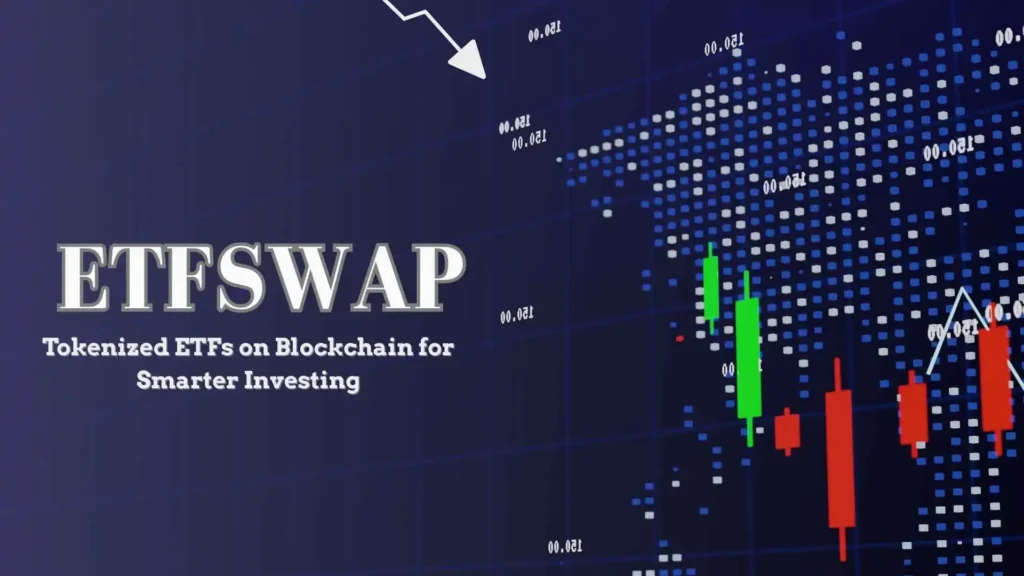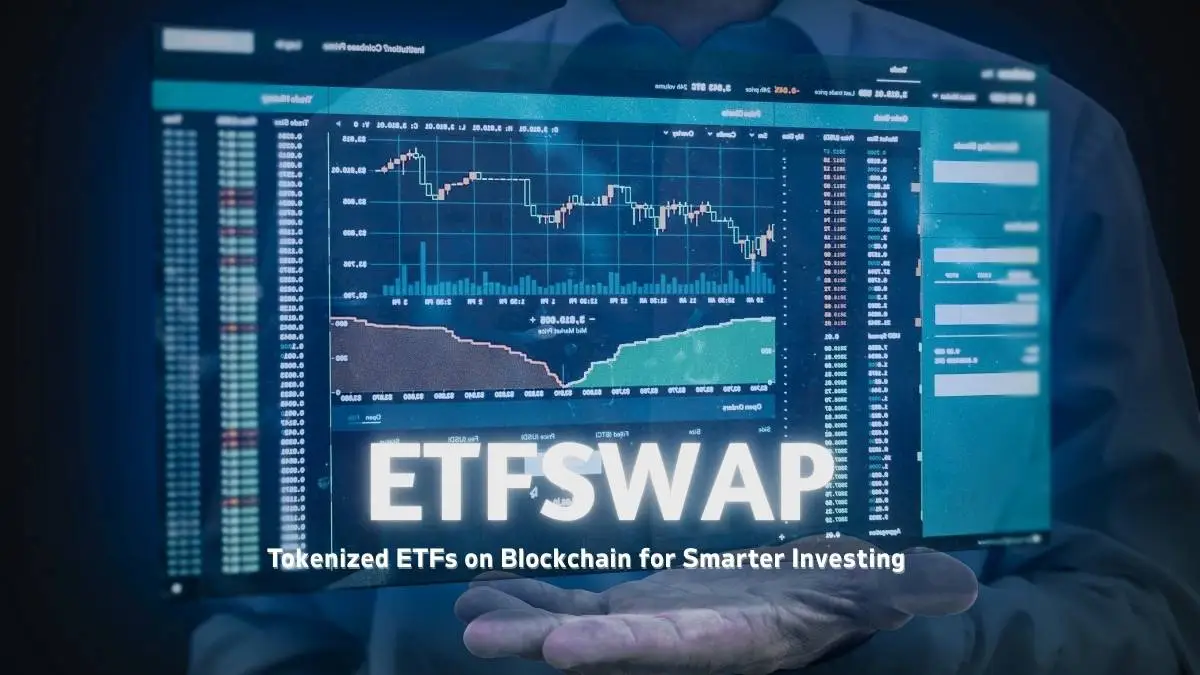ETFSwap brings ETFs to blockchain, enabling users to trade, create, and invest in tokenized portfolios. With diversification, transparency, and liquidity rewards, it redefines DeFi investing while balancing opportunities and risks.
Introduction
The decentralized finance (DeFi) space has transformed how people interact with financial assets. From lending protocols to decentralized exchanges, blockchain technology has redefined traditional finance by removing intermediaries. Among the latest innovations is ETFSwap, a platform that brings the concept of exchange-traded funds (ETFs) to the blockchain. Unlike conventional ETFs that rely on brokers, custodians, and stock exchanges, ETFSwap leverages smart contracts to create tokenized ETFs, diversified baskets of digital assets that can be traded as a single token.
What is ETFSwap?
ETFSwap is a decentralized finance (DeFi) platform designed to replicate the benefits of traditional ETFs in a blockchain-native environment. Instead of being confined to equities or commodities, It expands diversification into cryptocurrencies, tokenized assets, and cross-chain investments.
The platform allows users to:
- Trade tokenized ETFs peer-to-peer.
- Create customized ETF baskets through smart contracts.
- Provide liquidity and earn rewards.
- Access diversified portfolios without intermediaries.
This model is particularly attractive for investors who want exposure to multiple digital assets without managing each one individually.
How ETFSwap Works
- ETF Creation: A user selects a set of assets, say, Bitcoin (BTC), Ethereum (ETH), USDC stablecoin, and tokenized gold (tGOLD). Through tokenized ETF interface, these are locked into a smart contract, which then mints a new ETF token representing that basket.
- Tokenized ETFs: The minted ETF token can be traded like any cryptocurrency. Its value moves based on the performance of the underlying assets.
- Rebalancing Mechanism: Instead of manually managing allocations, ETFSwap’s smart contracts rebalance portfolios based on rules defined at creation (e.g., maintaining 40% BTC, 40% ETH, 20% USDC).
- Liquidity Pools: Investors can stake ETF tokens into liquidity pools, allowing efficient swaps while earning rewards from trading fees.
- Cross-Chain Flexibility: Unlike traditional ETFs confined to one market, ETFSwap supports multi-chain portfolios. An ETF could hold Solana-based tokens, tokenized ETF-based DeFi tokens, and tokenized real-world assets, something traditional ETFs cannot offer..
Benefits Beyond the Buzzwords
ETFSwap’s strengths go beyond the usual “low fees” and “transparency” pitch. Some unique advantages include:
- DIY Asset Management: Create ETFs around personal strategies, such as “Top 10 DeFi Tokens” or “Stable Yield Mix.”
- 24/7 Portfolio Liquidity: Unlike traditional ETFs, which only trade during market hours, ETFSwap tokens can be swapped globally anytime.
- Programmable Diversification: ETF creators can code in strategies, like shifting allocations when volatility spikes or locking in stablecoin buffers.
- Tokenized Real-World Assets: Imagine holding a portfolio that blends crypto + tokenized Tesla shares + tokenized real estate, all in one ETF.
- Extra Yield Layers: Beyond capital appreciation, investors can earn from staking or liquidity provision.

ETFSwap vs. Traditional ETFs
| Feature | Traditional ETFs | ETFSwap (Tokenized ETFs) |
| Custody | Centralized custodians (e.g., BlackRock) | Smart contracts, decentralized custody |
| Accessibility | Broker accounts, limited to market hours | Global, 24/7 trading via Web3 wallets |
| Underlying Assets | Equities, bonds, commodities | Cryptos, tokenized RWAs, cross-chain tokens |
| Transparency | Periodic disclosures | Real-time, on-chain asset verification |
| Costs | Management + brokerage fees | Low, transaction-based fees only |
| Customization | Fund managers decide | Anyone can create & customize ETFs |
Risks and Challenges
It is innovative, but investors should weigh risks carefully:
- Smart Contract Exploits: A bug in ETF smart contracts could impact user funds. Audits and bug bounties are critical.
- Volatility of Crypto Assets: ETFs holding crypto will naturally carry higher risk than traditional ETFs.
- Regulatory Scrutiny: Governments may classify tokenized ETFs under securities law, introducing compliance hurdles.
- Liquidity Gaps: While blue-chip crypto ETFs may thrive, niche or highly customized ETFs could suffer from low liquidity.
Real-World Use Cases
1. Beginner-Friendly Crypto Diversification
Instead of buying multiple tokens separately, new investors can purchase a single “Balanced Crypto ETF” token containing BTC, ETH, and USDC.
2. Thematic Index Funds
Communities could launch ETFs like “DeFi 20” or “Green Energy Token Fund,” giving retail investors simple thematic exposure.
3. Institutional Tokenization
Asset managers could tokenize real-world ETFs (e.g., commodities baskets, real estate portfolios) and issue them via tokenized ETF
4. Yield Optimization
Liquidity providers can stake ETF trading pairs (e.g., ETH/ETF-token) and earn transaction rewards on top of portfolio growth.
Why ETFSwap Matters in the DeFi Landscape
ETFSwap sits at the convergence of DeFi, asset tokenization, and portfolio management. According to a Boston Consulting Group (2022) study, tokenized assets could represent $16 trillion by 2030. Platforms like tokenized ETF are not just following the trend, they are shaping how investors will interact with diversified portfolios in a tokenized economy.
It also has the potential to bridge DeFi and traditional finance: institutional players may use ETFSwap to issue tokenized versions of their existing ETF products, opening new liquidity channels between retail investors and Wall Street.
FAQs
Q1: What makes ETFSwap different from decentralized exchanges (DEXs)?
DEXs focus on single-token swaps. It specializes in multi-asset baskets, giving investors diversification in one trade.
Q2: Can anyone create an ETF on ETFSwap?
Yes. Users can launch custom ETFs by bundling multiple tokens into a smart contract. The resulting ETF token can then be traded or staked.
Q3: Do I need permission or a brokerage account?
No, It is permissionless. All you need is a Web3 wallet.
Conclusion
It represents a paradigm shift in portfolio investing on the blockchain. By turning ETFs into tokenized, programmable assets, it empowers anyone not just institutions to design, trade, and benefit from diversified portfolios.
While challenges like regulation and contract security remain, ETFSwap sets the stage for the next evolution of DeFi, moving beyond speculation into structured, professional-grade investment products accessible to all.

James Whitaker brings a wealth of knowledge and creativity to content writing across various niches such as health, technology, personal finance, and digital marketing. Known for his ability to simplify complex topics and deliver audience-centric content, he helps brands build authority and trust.

